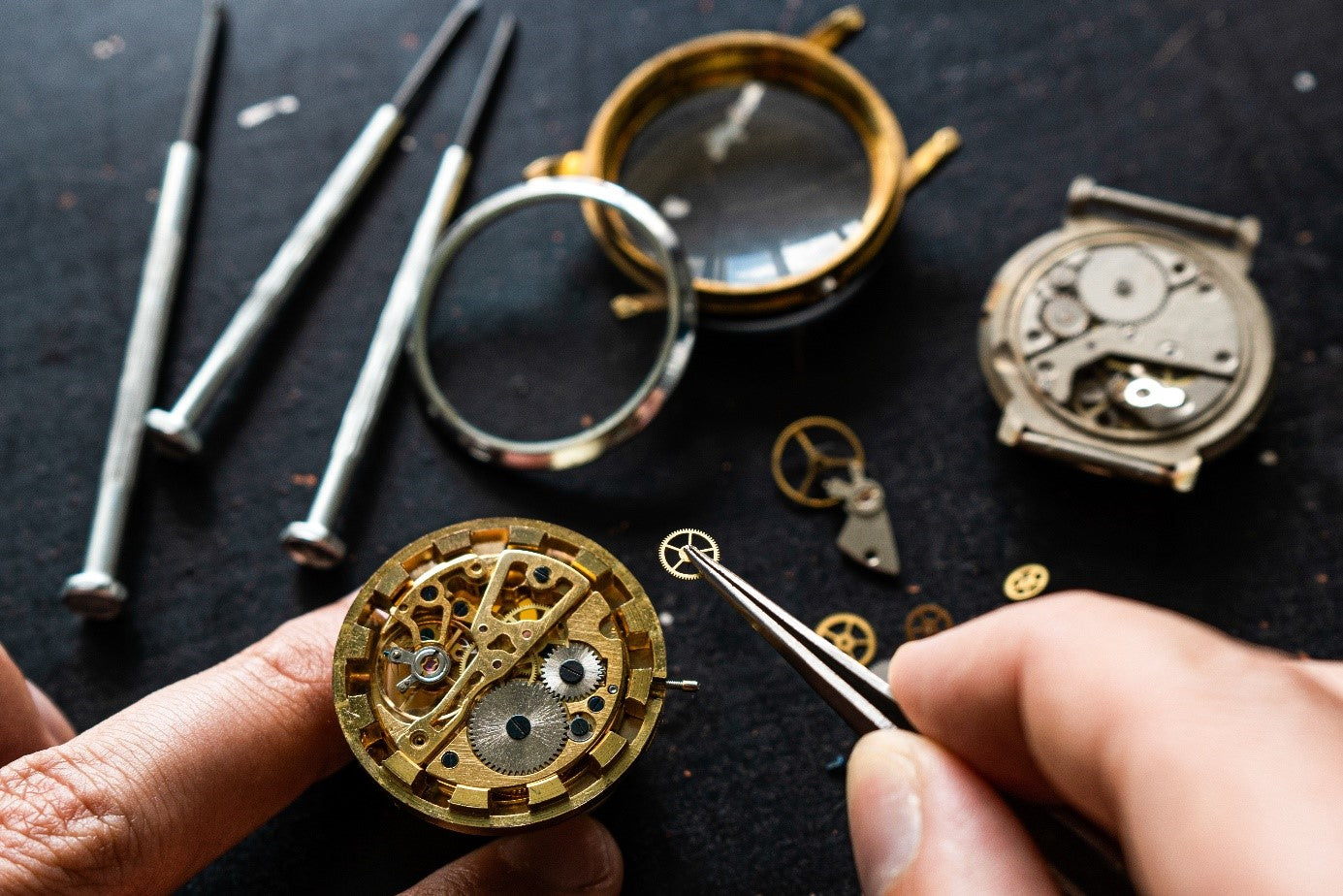Mechanical watches - timeless classics
Mechanical watches do not require batteries, thus protecting the environment. These luxurious timepieces have always been popular collector's items, which is why the value of some vintage mechanical watches has increased over the years.
Mechanical watches - the return of classic elegance
For a long time, wristwatches and pocket watches were solely mechanically powered. This changed with the invention of the quartz watch, which could display time more accurately and was cheaper to produce. It largely replaced mechanical watches. By the end of the 1980s, however, enthusiasts and collectors began to rediscover the charm and incomparable quality of mechanical watches. Their production required a special technique, which they valued and for which they were willing to accept inaccuracies in the time display.
However, many manufacturers had already switched to quartz watch production to keep up with society's preferences. Therefore, enthusiasts mostly bought and sold remaining stock at flea markets and collectors' gatherings. Due to the declining demand, high-quality masterpieces were sold at very reasonable prices for a while.
A few years later, the general public also seemed to be losing interest in quartz watches. They were looking for time-tested mechanical watches, and manufacturers responded with new models. These combined the timeless quality of mechanical movements with more modern designs, paving the way for a lasting return of classic watchmaking.
The classic - the mechanical watch with hand winding
Mechanical wristwatches and pocket watches get their power from mainsprings that can be wound by hand. The mainspring then stores the supplied energy and transfers it in small portions to the gear train. This is controlled by a small ratchet that prevents the spring from unwinding immediately. The power is then transmitted through the gear train, which is set to rotate 360 degrees within one minute. The gear train itself is controlled by the escapement. This ensures that it moves steadily but at the same time does not run unchecked. The escapement is connected to the balance wheel, to which it transmits small pulses of power. The balance wheel thus oscillates back and forth, setting the rhythm for the watch.
For a long time, the mechanical hand-wound watch was the only form of watch. Well-known manufacturers still produce them because they require a flattering case, which flatters the design. The movement must be wound at least every eight days to prevent the watch from stopping. If it is not used for an extended period, it can also be easily rewound. Batteries are not required for this model.
The revolution - the mechanical watch with automatic winding
The classic mechanical watch has evolved over the years. This led to the invention of the automatic winding mechanism, which powers the movement through movement. Manual winding is thus no longer necessary, although it is usually still an option. Automatic winding uses a rotor, which is caused to rotate by gravity when the watch is moved. This rotation winds the mainspring, which in turn stores the energy.
A mechanical watch with automatic winding can be easily wound by daily movement and also requires no batteries. Furthermore, due to the constant power supply, it is often more accurate than a hand-wound model.


